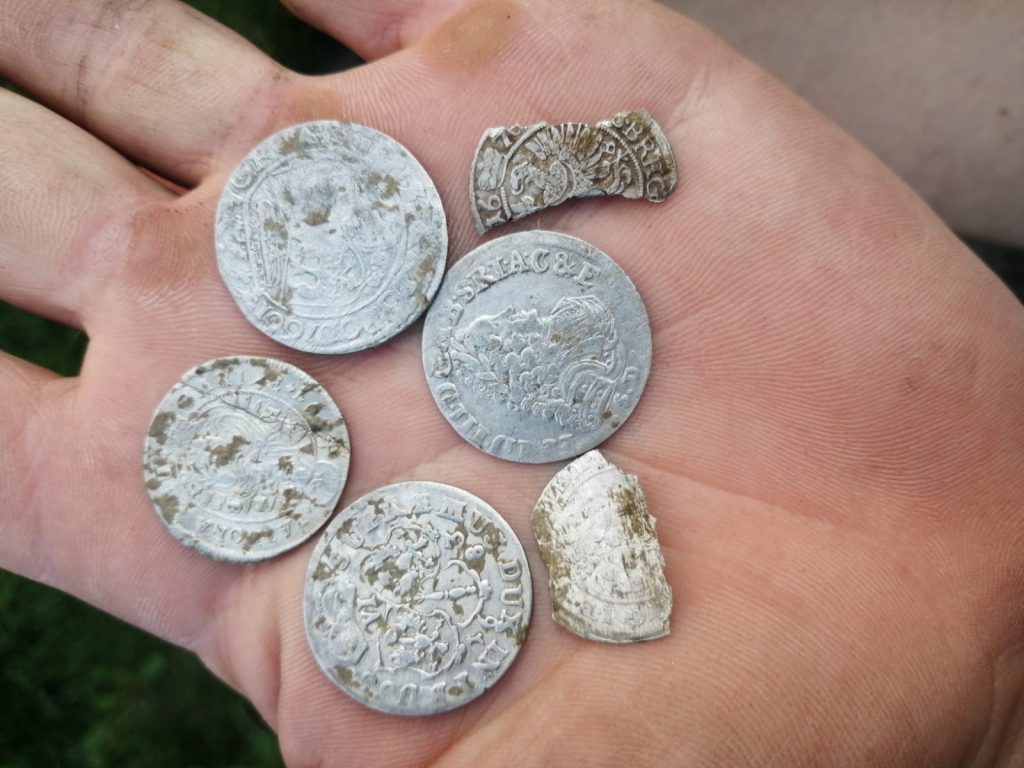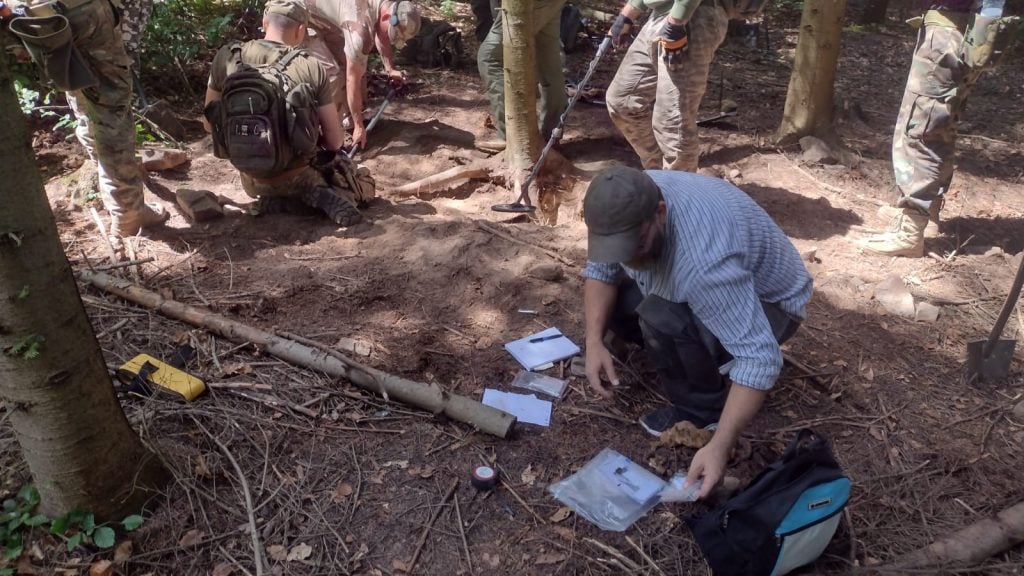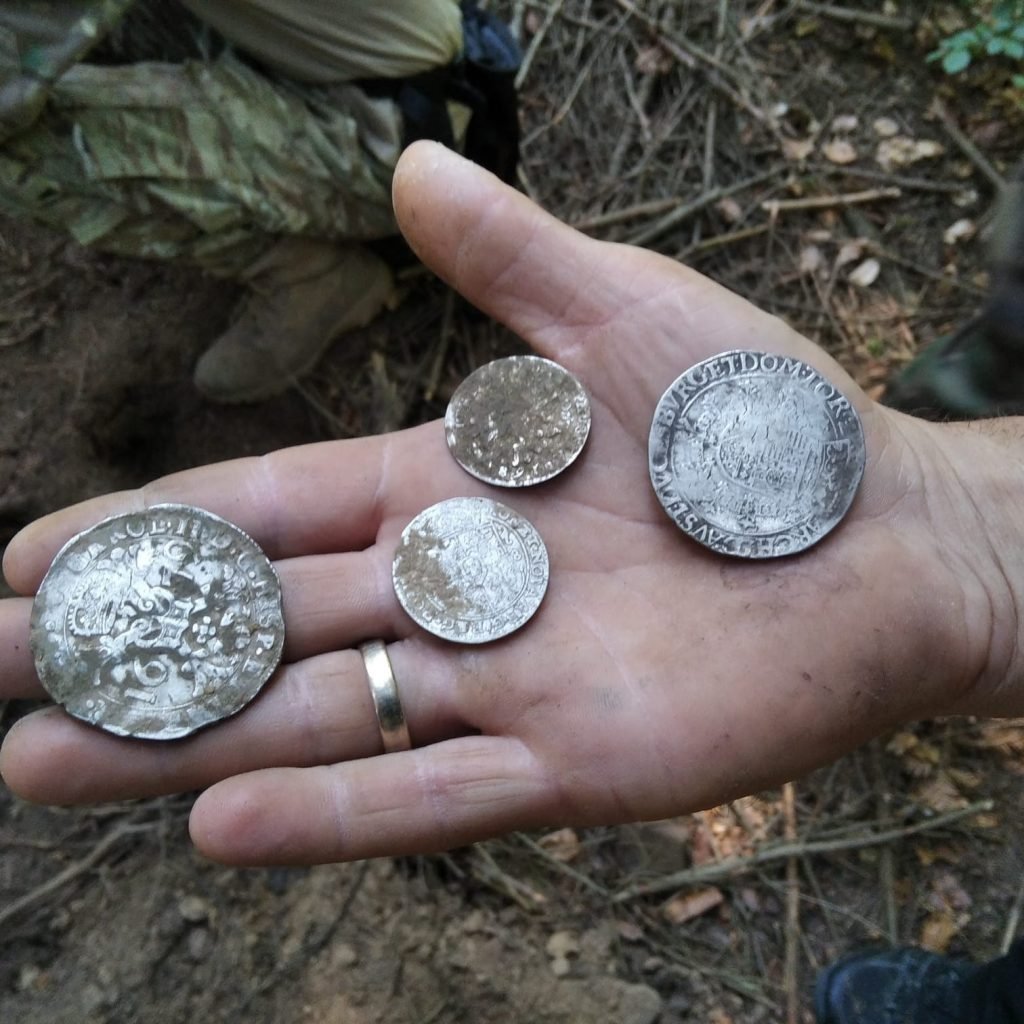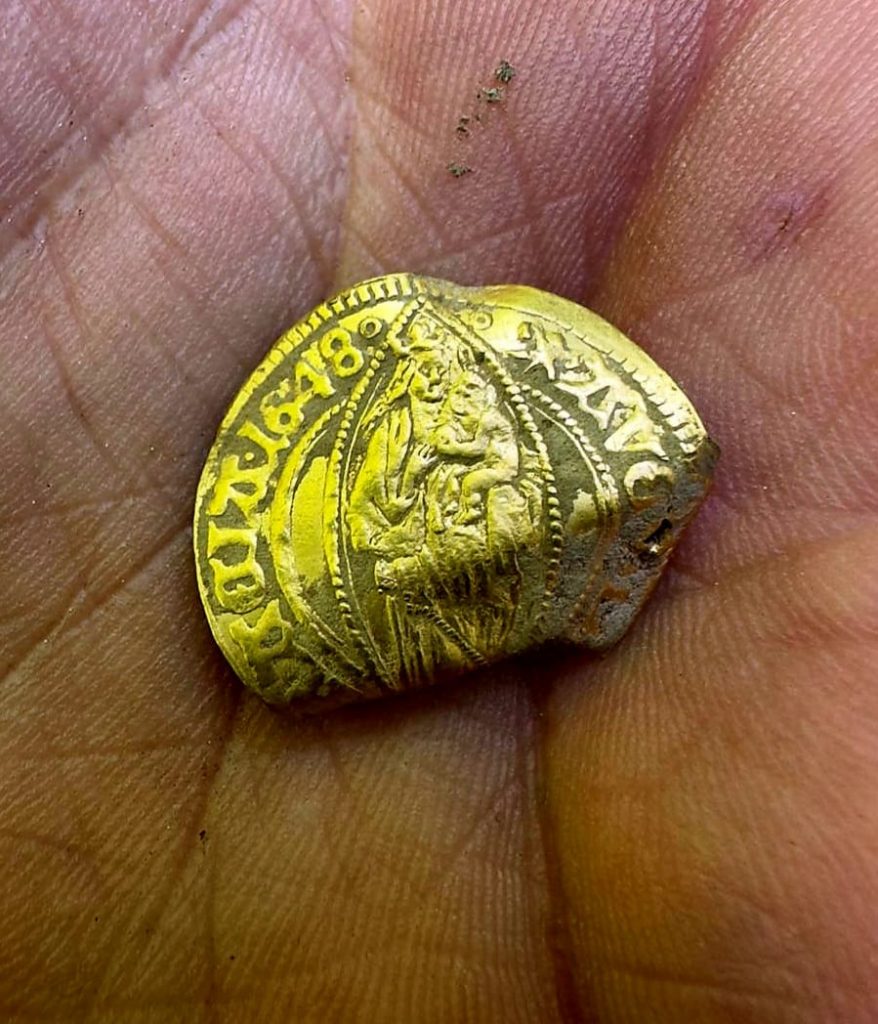Archaeology & History
A Coin Hoard With Possible Ties to an Infamous Con Man Surfaces in the Polish Mountains
Researchers posit the coins were donations made to the false prophet Antoni Jaczewski.

Researchers posit the coins were donations made to the false prophet Antoni Jaczewski.

Artnet News

A group of archaeologists has uncovered a large trove of coins in the Świętokrzyskie Mountains in south-central Poland. The gold and silver relics date to the 17th and 18th centuries, and more significantly, could be associated with a notorious con.
The hoard’s location has long held religious meaning—its anglicized name, Holy Cross Mountains, refers to a relic housed in a nearby Benedictine monastery, believed to have been cut from the cross on which Jesus was crucified. Here, during the time of the Great Northern War in Poland (1700–21), dwelt a hermit known as Antoni Jaczewski, who fashioned himself as a prophet with mystical powers.
Notably, Jaczewski was active during a bubonic plague outbreak between 1708 and 1712, during which he claimed to possess healing abilities granted to him by the Virgin Mary, who he purportedly lived with at his mountain hermitage. Donations poured in from pilgrims, and his fortunes grew to a point where he reportedly required armed sentries to safeguard his treasury.
According to Zwiadowca Historii, Jaczewski was arrested and put on trial for running his scam. He escaped from prison during legal proceedings, only to return to the mountains to resume his con. After he was recaptured in 1712, Jaczewski was sentenced by the court of the Bishop of Krakow to life imprisonment in Częstochowa.

The archaeologists at the site. Photo: Świętokrzyska Exploration Group.
In June 2022, lured by the legend of the grifter and armed with metal detectors, archaeologists from the Świętokrzyska Exploration Group set out to uncover traces of Jaczewski. According to the group’s Sebastian Grabowiec, they turned up an “impressive deposit,” followed by smaller caches of a dozen or several coins each. The largest trove represents currency from across Europe and includes orts, krajcars, patagons, and kopecks.

Coins from the hoard. Photo: Świętokrzyska Exploration Group.
The “cherry on the cake,” said Grabowiec, was the final discovery: a gold Hamburg ducat from 1648 depicting the Madonna and Child, with a pierced edge that suggests it could have been used as a medallion.
“It seems that the coins may be part of the fees collected by the self-proclaimed hermit—donations or votive offerings, or perhaps also goods stolen from the local nobility,” said Wojciech Siudowski of the Provincial Heritage Monuments Protection Office in Kielce.
Quite likely, the researchers posited, the cache was buried in a bid to hide it from authorities when the con man went on the run.

The gold ducat. Photo: Świętokrzyska Exploration Group.
The trove has been transferred to the Historical and Archaeological Museum in Ostrowiec Świętokrzyski, where it will be further studied.
“Its conservation and detailed numismatic and historical analysis are planned this year,” said Siudowski of the museum, “which we hope will provide more answers about the past of this deposit.”